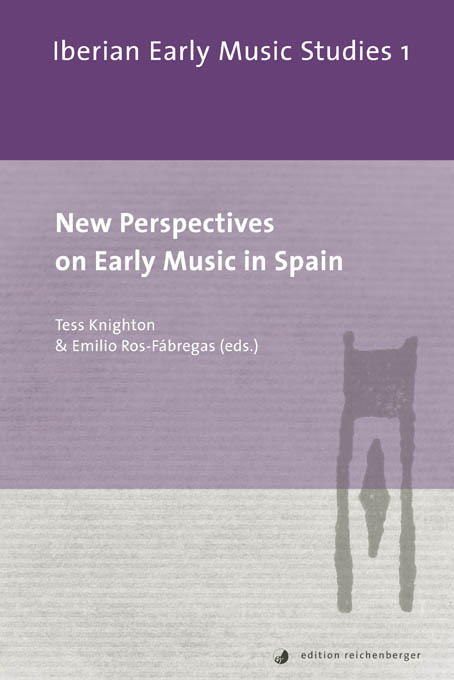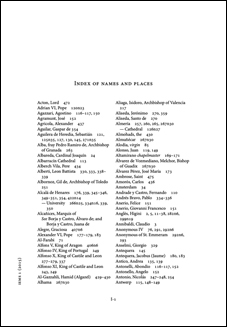|
|
|||||||||||||||||
|
In recent years there has been a resurgence of interest in Spanish music of the Middle Ages and Early Modern period on the part not only of scholars but also of performers and listeners, and not only from inside Spain but also from without. However, the research activity stimulated by this interest has mostly been published in Spanish and within Spain, and has yet to establish a clear narrative in a broader European context. Histories of Western European music still tend to present only brief surveys of musical developments in Spain before 1600, and the extent to which the musics and musicians of the Spanish kingdoms formed an integral part of a wider cultural map has rarely been considered in depth. This volume brings together research by scholars, both well established and of younger generations, both Spanish and from all over the world, that offers new perspectives on many aspects of early musical culture in the Peninsula whether regarding the Ars Nova or the Counter-Reformation, music historiography or analysis, early improvisation techniques or imitatio in Renaissance polyphony, and questions of performance practice or ambassadorial musical networks. These essays will thus hopefully make an important contribution to establishing and sustaining a valuable discourse with that broader European context.
CONTENTS Introduction 1. Tess Knighton & Emilio Ros-Fábregas: Iberian Music Research in the Twenty-First Century Music Historiography and Reception 2. Emilio Ros-Fábregas: Higini Anglès’s Defense of Medieval and Renaissance Sacred Music in Mid-20th Century Rome — 3. Kateryna Schöning: Vocal Basis in Tientos by Luis Milán and Alonso Mudarra: Myth or Reality? — 4. Stephanie Klauk: Problems of Authenticity in the Works of Tomás Luis de Victoria: Some Methodological Considerations Sources Discovered and Revisited 5. Santiago Galán Gómez: A New Source of Notre Dame Polyphony from Spain: The Manuscript Toledo, Biblioteca Capitular, 98-28 and its Repertory — 6. David Andrés-Fernández: Corpus processionalum in Late Medieval Aragon: Manuscripts, Attributes and Special Features — 7. Michael Noone & Graeme Skinner: Multum in parvo: A 1555 Morales Processional Partbook at Toledo Cathedral—Its Genesis, Use and Later History — 8. Javier Marín López: Music Books for an iglesia principal y calificada: The 1657 Inventory of Jaén Cathedral in Context Patrons and Patronage 9. Ángel Manuel Olmos: A New Identity for the “Medina” Attribution in the Cancionero Musical de Palacio — 10. Ferrán Escrivà Llorca: Power, Erudition and Musical Patronage in the Sixteenth Century: The Borja Dynasty and the Dukedom of Gandia — 11. Erika Supria Honisch: Light of Spain, Light of the World: Invoking St James in Rudolfine Prague — 12. Greta J. Olson: Juan Bautista Comes and Conflicting Aims of Church and State in Early Seventeenth-Century Valencia Liturgy and Music 13. Juan Carlos Asensio: “Before retiring at the close of day …”: The Hymnary for Compline in the Escorial’s Choirbook Collection — 14. Mercedes Castillo Ferreira: A Fifteenth-Century Plainchant Office by Hernando de Talavera to Commemorate the Battle of Salado — 15. Gonzalo Roldán: Music and Ceremony in Granada Cathedral following the Council of Trent Music Notation and Analysis 16. Sarah Johnson: Similarity and Contrast in the Cantigas de Santa Maria — 17. Mary E. Wolinski: The Case of the Disappearing Rests: A New Look at the Spanish In seculum Hocket in Madrid, Biblioteca Nacional de España, MS 20486 — 18. Rory McCleery: Duo seraphim clamabant: Homage, “Parody” and Marian Symbolism in a Motet and Antiphon from Renaissance Seville Theory, Teaching and Improvisation 19. Amaya Sara García Pérez: Music and Architecture in the Historic Façade of the University of Salamanca — 20. Ascensión Mazuela: Artes de canto and Music Teaching in the Renaissance Iberian World — 21. Giuseppe Fiorentino: Con ayuda de nuestro señor: Teaching Improvised Counterpoint in Sixteenth-Century Spain — 22. Luca Bruno: Improvisational Practice and Harmonic Composition in Mid-Sixteenth-Century Italy and Spain Traditions of Performance 23. Mauricio Molina: Non se tenga por maestra complida: The Skilful Medieval Female Performer and Her Challenge to the Social and Intellectual Space Dominated by Males — 24. Pilar Ramos López: The Spanish Prohibition on Women Listening to Music: Some Reflections on Juan Luis Vives and the Jewish and Muslim Legacy — 25. Sergi Zauner: Revising Polyphonic Lamentations: Composition, Transmission and Performance Practice Context — 26. Hector Sequera: Alternatives to the “English a cappella heresy”: Performance Practice of Sacred Spanish Polyphony in English Domestic Circles based on Elizabethan and Early Jacobean Sources By Way of Coda: A Change of Perspective 27. Leo Treitler: Reflections on Our Mimetic Heritage: From Plato to Louis Vuitton
|
|||||||||||||||||
Complements In this space we offer you some additional material and complements to IEMS 1 free to download
| |||||||||||||||||


